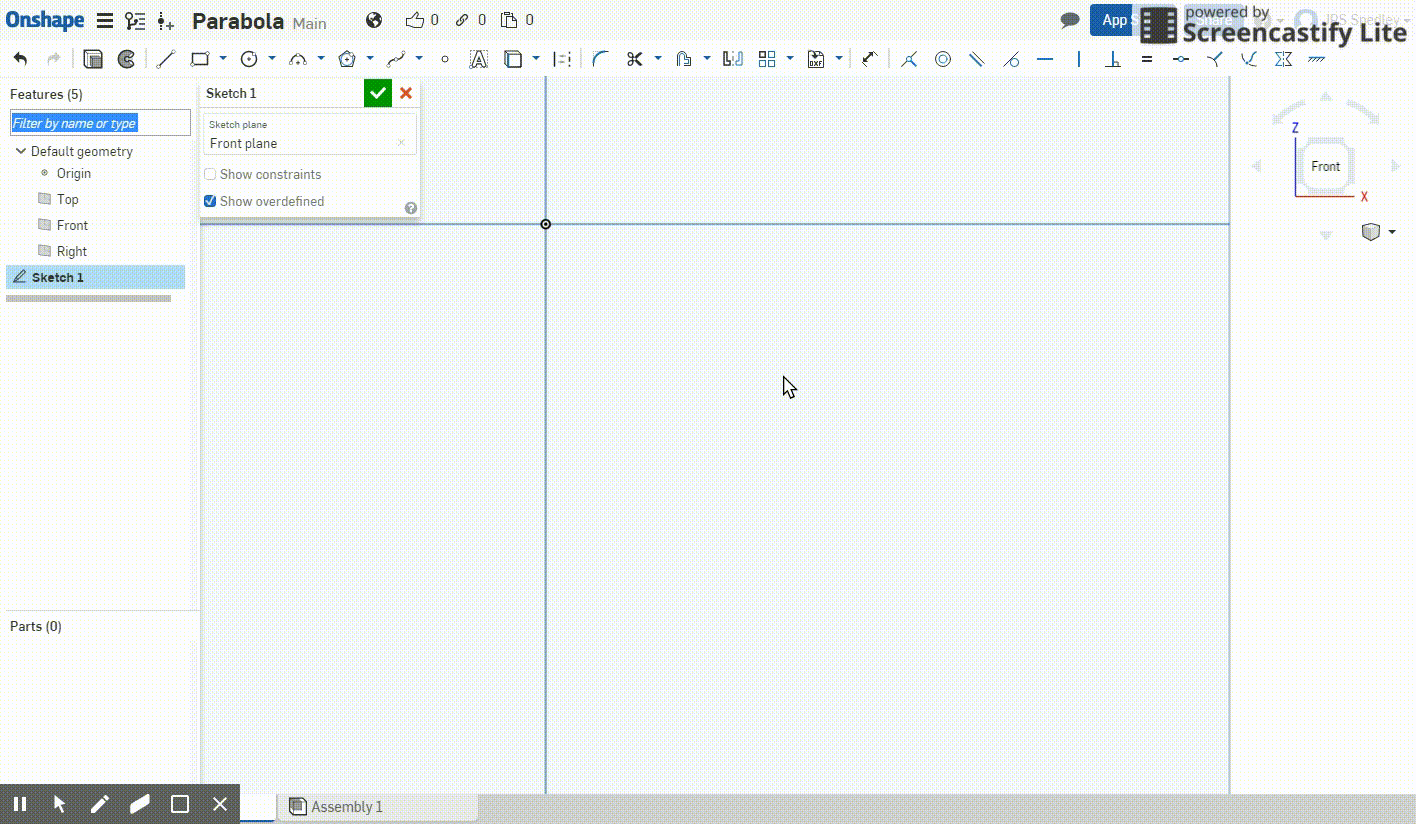Welcome to the Onshape forum! Ask questions and join in the discussions about everything Onshape.
First time visiting? Here are some places to start:- Looking for a certain topic? Check out the categories filter or use Search (upper right).
- Need support? Ask a question to our Community Support category.
- Please submit support tickets for bugs but you can request improvements in the Product Feedback category.
- Be respectful, on topic and if you see a problem, Flag it.
If you would like to contact our Community Manager personally, feel free to send a private message or an email.
Drawing a Parabola
 jrs_spedley
Member Posts: 71 ✭✭
jrs_spedley
Member Posts: 71 ✭✭
in Drawings
I needed a parabola and couldn't find a tutorial but luckily it was actually quite easy (didn't fancy intersecting cones etc).
So here is how to draw a parabola directly on a sketch. I then fix the point in place to demonstrate the fixed focus property of a parabola.
https://cad.onshape.com/documents/d261b0ef08e360e65b19c076/w/4b151cf9efaac9256aa6c440/e/4a4c98b6a19e1de28c3f61d9

So here is how to draw a parabola directly on a sketch. I then fix the point in place to demonstrate the fixed focus property of a parabola.
https://cad.onshape.com/documents/d261b0ef08e360e65b19c076/w/4b151cf9efaac9256aa6c440/e/4a4c98b6a19e1de28c3f61d9

4
Comments
Not sure if there is an easier way to do a 2/3rds snap?
https://www.varsitytutors.com/hotmath/hotmath_help/topics/directrix
I set up a few constraints that allow me to change the focus point and the parabola is re-drawn.
This is a simple sketch that I made to do some testing with a solar cooker idea I have. It's still very early in the design concept.
https://cad.onshape.com/documents/f65c2941af2e800381e4a85d/w/1ca8ccf3b7a4fb3dff3eda88/e/ad4680a025b7ffbff64643f7?renderMode=0&uiState=6490ef607fc6d26a71511f87
I don't know if this is helpful, but I wanted to share my approach as well - in case anyone else is looking to do their own.
"If the Bézier curve has control points P0 and P2 symmetric about the y-axis and P1 (the control point in the middle) is at x=0, then the curve is a standard parabola that opens either upwards or downwards. This greatly simplifies the problem.
Simon Gatrall | Product Development Specialist | Open For Work
Who exactly is drawing parabolas with no care as to the directrix or focus?
You'd think those would be the "control" points for the conic tool.
Is everybody just doing decorative items in the sketches?
It's not difficult. It's just not something that a lot of people need unless they're doing optics or acoustics. I'm sure someone could create a pretty simple Featurescript which would take whichever knowns and produce a parabolic curve.
Simon Gatrall | Product Development Specialist | Open For Work
I agree. I don't think it's a difficult thing.
Apparently most people don't in fact need it, unless it's for optics or acoustics or RF or anything anyone might actually conceivably want a parabola for.
So my point stands -- what exactly are people doing with parabolas where they don't need the most important features of a parabola for? Artwork?
Simon Gatrall | Product Development Specialist | Open For Work
Sounds like you probably already have a workflow, but here's an approach if it helps. This one is driven by focal point, and gives you a directrix. If you haven't seen the Ray Tracer feature set, you might like that too. I've used it to prove to myself that I do in fact have a parabola with the focus set right.
I agree it could be nice sometimes to just have a tool for it though; ideally just a sketch tool.
https://cad.onshape.com/documents/250e1277f6e85046721d2a20/w/4f8f1fc12122c7a3d46bdf26/e/7af2c6d09a2dc85c95d2f907
The Onsherpa | Reach peak Onshape productivity
www.theonsherpa.com